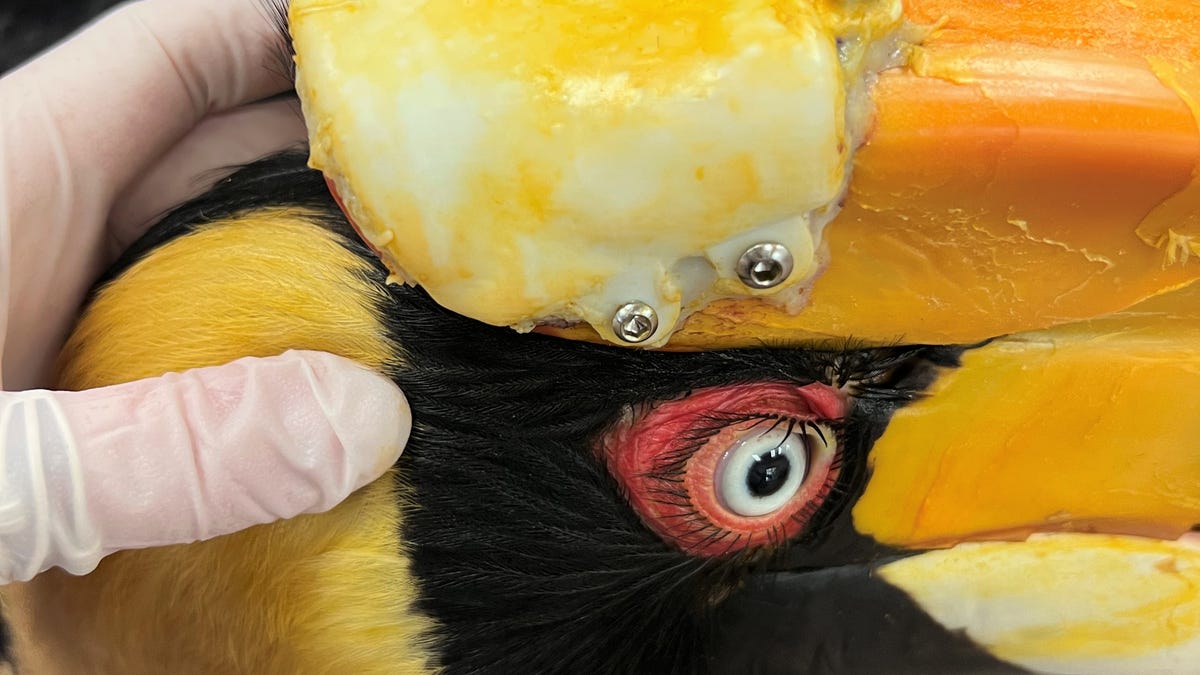3D Printing Saved This Vulnerable Bird's Life
Formlabs printed a prosthetic used to treat an Indian hornbill named Crescent that had cancer in its bill, showing the technology's medical promise.

A great Indian hornbill named Crescent sports a 3D printed replacement for a section of her bill removed because of cancer.
A 3D printer company and a group of researchers built a prosthetic to replace a diseased portion of a rare bird's bill, the company said Monday, demonstrating the use of the technology for treating individuals with difficult medical ailments.
Formlabs and a University of South Florida medical team built the replacement for Crescent, a great Indian hornbill whose beak had grown cancerous. Crescent is a resident of ZooTampa in Tampa, Florida, and had a cancer that's usually fatal for the species.
Formlabs used a "biocompatible" resin called BioMed White that lets its 3D printers build products for use in human bodies. The developmental material was used to form part of Crescent's casque, the distinctive ridges that protrude above a hornbill's beak. The cancer, located near the bird's skull, couldn't be removed because it housed part of her sinuses.
"Clinical literature has shown improved outcomes when patient-specific prosthetics, medical devices and surgical guides have been used with human patients," Gaurav Manchanda, director of medical market development for Formlabs, said in a statement. "We're thrilled that our technology was also able to bring these same benefits to Crescent."
The procedure illustrates one of the more interesting possibilities for 3D printing, a technology also called additive manufacturing that builds objects layer by layer. The process, still too expensive to compete with injected molded plastic and other mass manufacturing methods, can be used to create precise, custom-shaped objects such as medical implants designed for specific individuals.
3D printing has been used to create personalized dental aligners for straightening teeth, implants for replacing missing teeth, and replacement ankle bones, joints, skull plates and more. A Formlabs partner also is working on customized pelvic strengtheners for women.
Before the procedure, USF Health researchers created a 3D model from a CT scan to figure out which section of Crescent's bill needed to be replaced. The team later designed the prosthetic's shape and a surgical guide to assist with its attachment with medical grade screws.
The bird recovered quickly and adapted. Oil from her preening glands stained the prosthetic yellow to match the rest of her bill.
Hornbill populations are decreasing worldwide, and the great hornbill is classified as vulnerable on the International Union for Conservation of Nature's Red List of Threatened Species.

